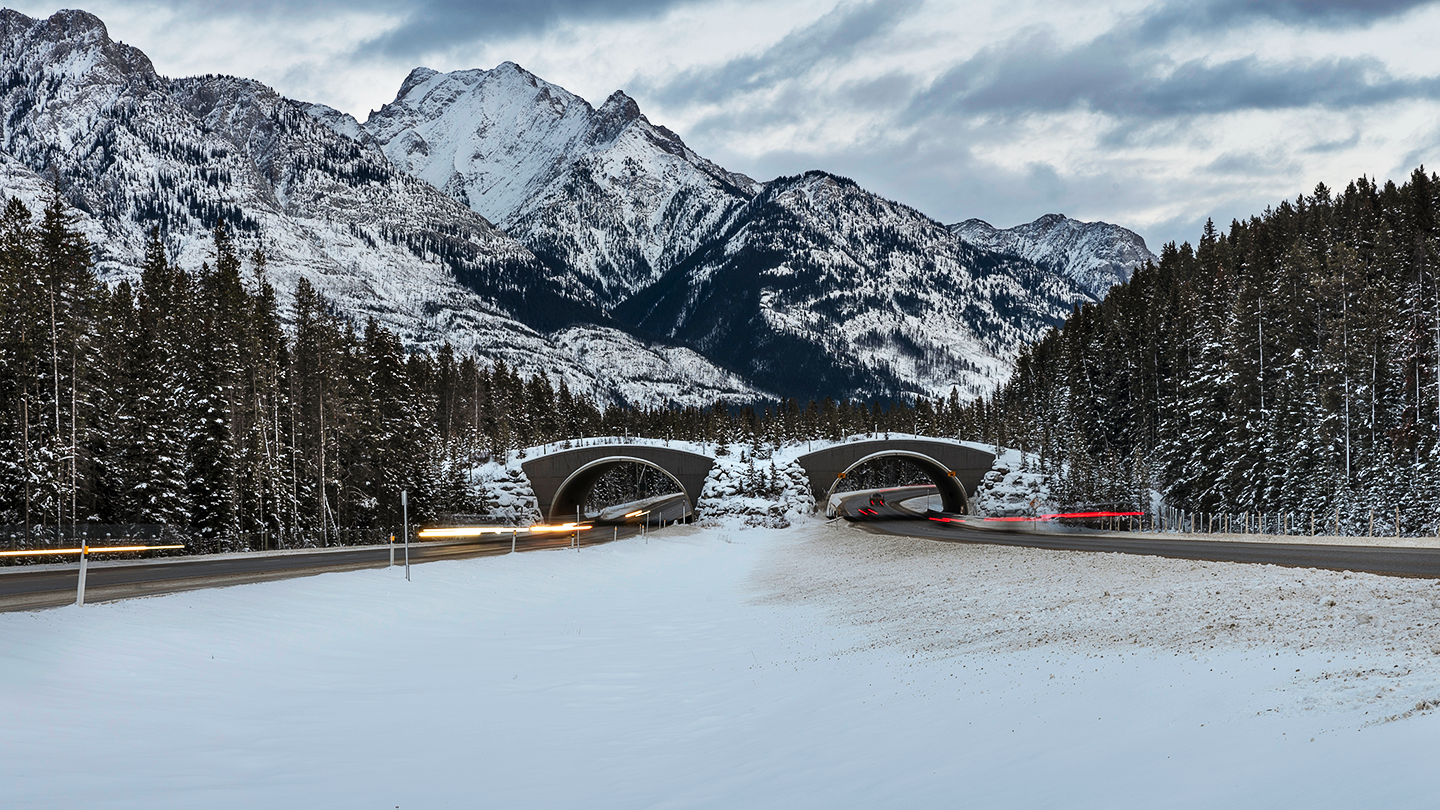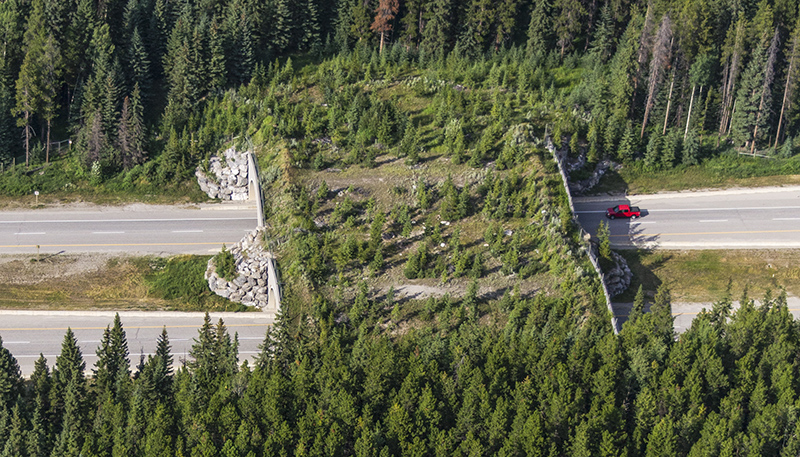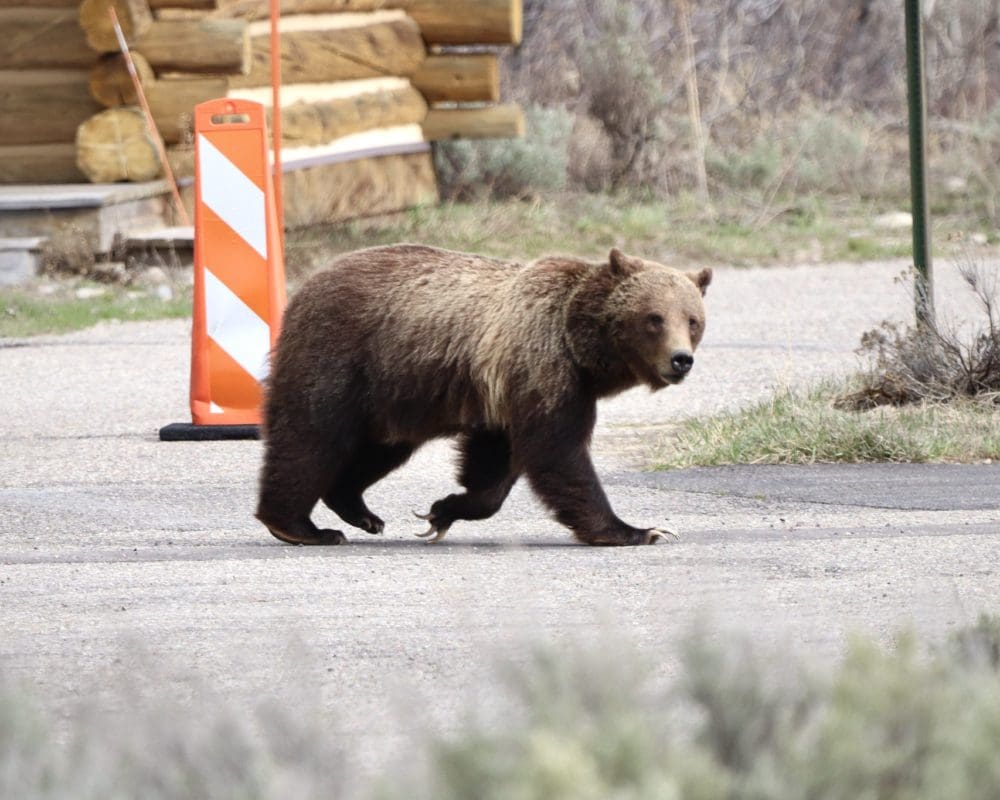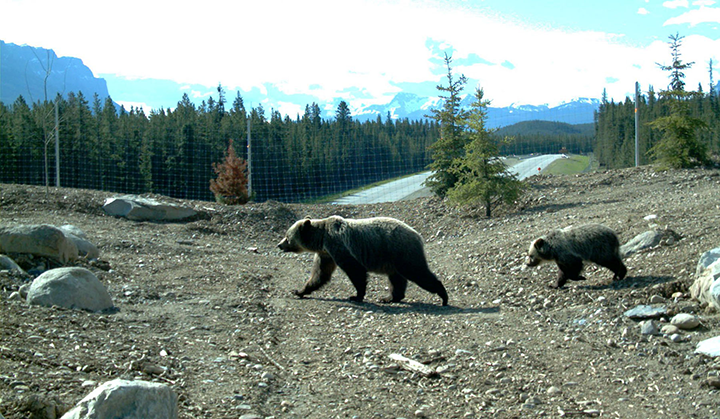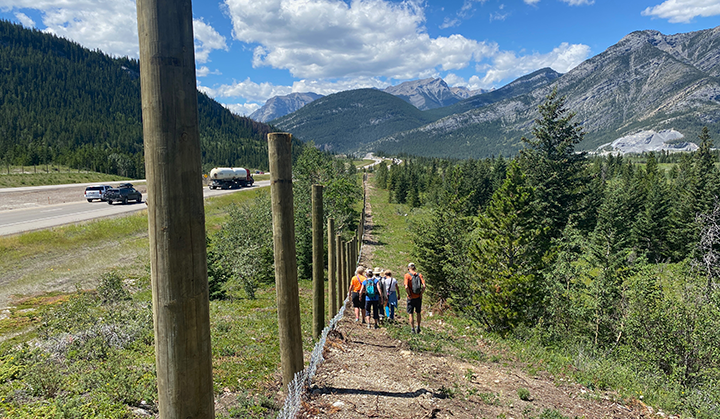7 places wildlife crossings are building pathways to safety for animals and people
Animals need connections to survive and thrive.
However, with a growing human population comes more roads that cut across wildlife habitats, and more vehicles transporting people and goods to their destinations — increasing the risk of wildlife-vehicle collisions.
Wildlife crossing structures, along with fencing to guide animals to the crossings, are proven solutions for reducing the risk of collisions and keeping wildlife connected to other populations, food sources, and their habitats.
Increasingly, the importance of keeping wildlife habitats connected is being recognized by communities and government decision-makers. This means more wildlife crossings are in the works!
Advocating to keep wildlife connected in the Yellowstone to Yukon region
Without connected habitats, wildlife can’t access food, mates, or other essential needs. In other words, connections are the key to their survival — just like they are for us.
That’s why helping wildlife stay connected is a big part of our work.
With more than 126 existing wildlife underpasses, overpasses, and fencing, the Yellowstone to Yukon region now has more such crossing structures than anywhere else in the world!
Elk, grizzly bears, cougars, and many other critters use these crossings daily. And the passengers of countless vehicles are spared from costly and devastating collisions with these animals.
These crossing structures are also part of a much larger conservation picture. They are supporting the connection of wildlife movement corridors in the largest, most intact mountain region in the world — ultimately, helping ease the impacts of climate change and biodiversity loss.
Wildlife crossing wonders around the world
Whether you see them or not, wildlife crossing structures around the world are helping species get where they need to go safely.
From koala rope crossings, turtle and toad tunnels, crab overpasses, and many others, the range of ways that people are working to keep our wild neighbors connected is awe-inspiring!
Learn more about a handful of the crossings that are out there; and how a growing number of wildlife crossing structures in the Yellowstone to Yukon region and beyond are a leading force in the global cause for connection.
Here are seven places wildlife crossings are building pathways to safety for animals and people:
1. A growing network of wildlife crossings in Montana, United States
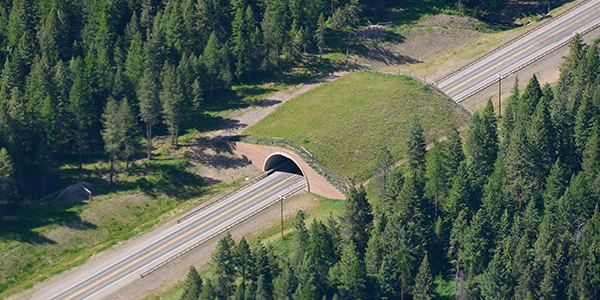
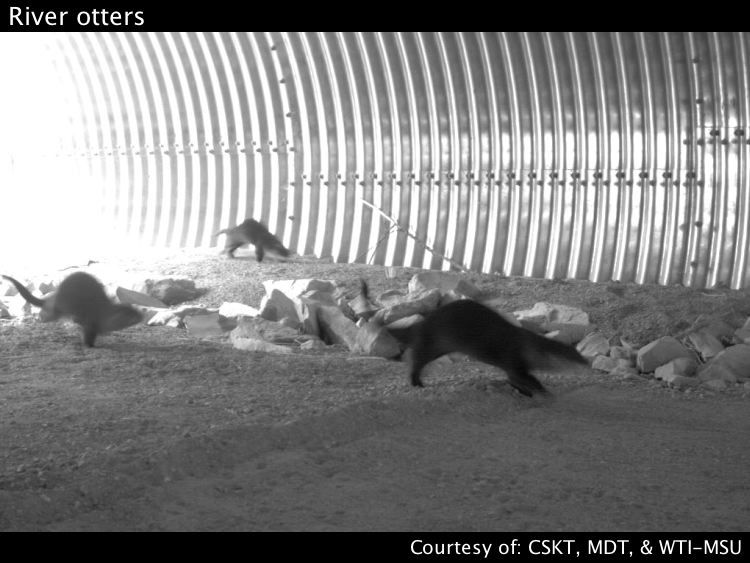
In Montana, the 56-mile (90-kilometer) stretch of Highway 93 that runs through the Flathead Indian Reservation contains the largest network of wildlife crossings in the United States. It is also one of the highest densities of such crossings in the world.
Years ago, the Confederated Salish and Kootenai Tribes came together to address the safety issues of what was, at the time, one of the most dangerous roads in Montana. Their collaborative efforts have resulted in a network of more than 42 highway animal crossings.
Now, recently announced federal funding is supporting the construction of more crossing structures of Highway 93 and other busy roads.
2. New overpass in north Idaho, United States
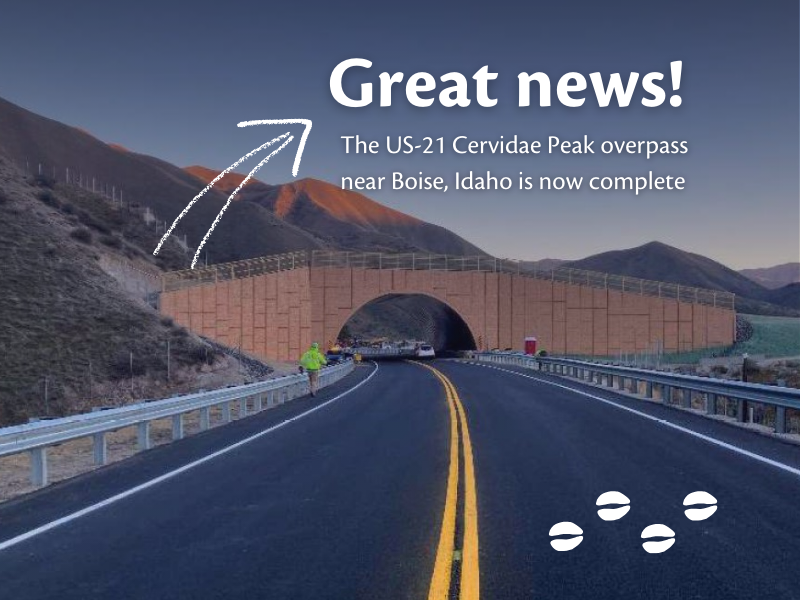
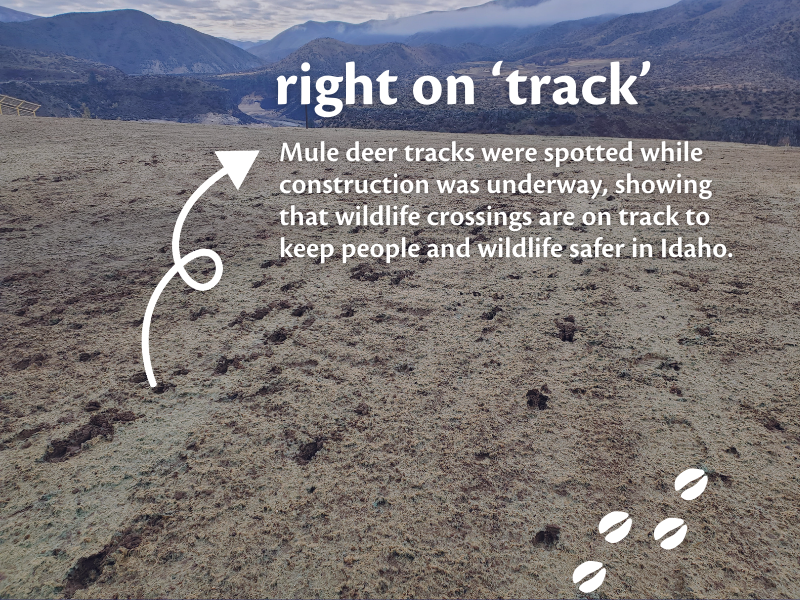
In north Idaho, the Cervidae Peak overpass now arches over the US-21. This marks a significant step towards safer roads for both people and wildlife in the state.
Equipped with fencing to guide animals to the crossing, this wildlife crossing will play a crucial role in reducing collisions in a vital habitat linkage area for deer, elk, and other wildlife.
This overpass is yet another case where wildlife were using the crossing, even before completion. Mule deer tracks were spotted as construction was still underway, showcasing the immediate impact within the wildlife corridor.
3. A decade in the making: connecting wildlife in the Bow Valley, Alberta, Canada
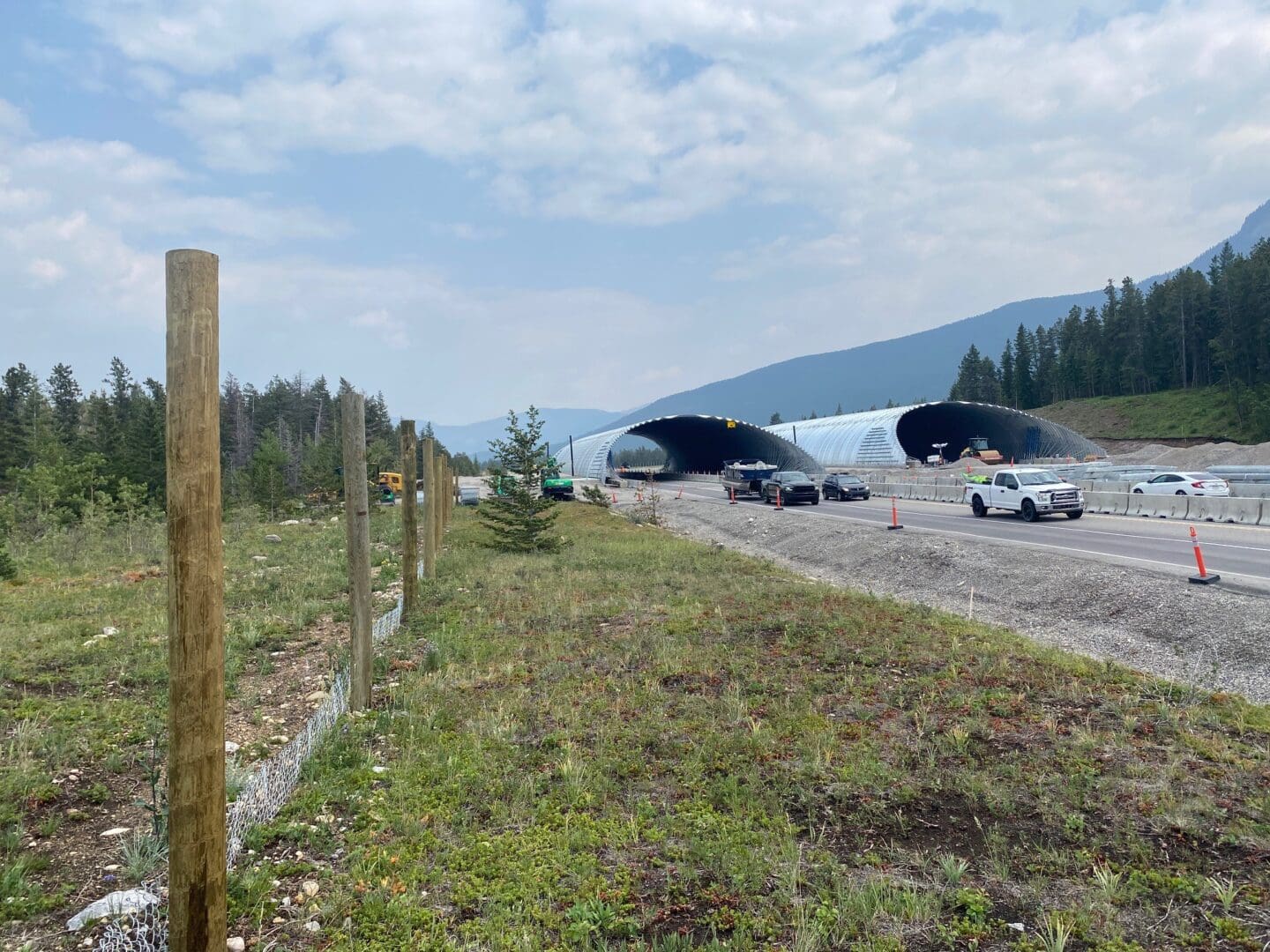
At the “gateway” of the Rocky Mountains in Alberta, you’ll find the Stoney Nakoda Exshaw Wildlife Arch being constructed just east of the town of Canmore.
This wildlife overpass is the result of more than 10 years of advocacy from Y2Y, partners, and community members. It stands as the first wildlife overpass outside a national park in the province, adding to the network of crossings in Banff National Park.
Creating a pathway for wildlife over the millions of vehicles that pass below each year, the crossing also sits in one of the four important east-west wildlife connectors in the Yellowstone to Yukon region.
4. Reconnecting the Rockies in Alberta and British Columbia, Canada
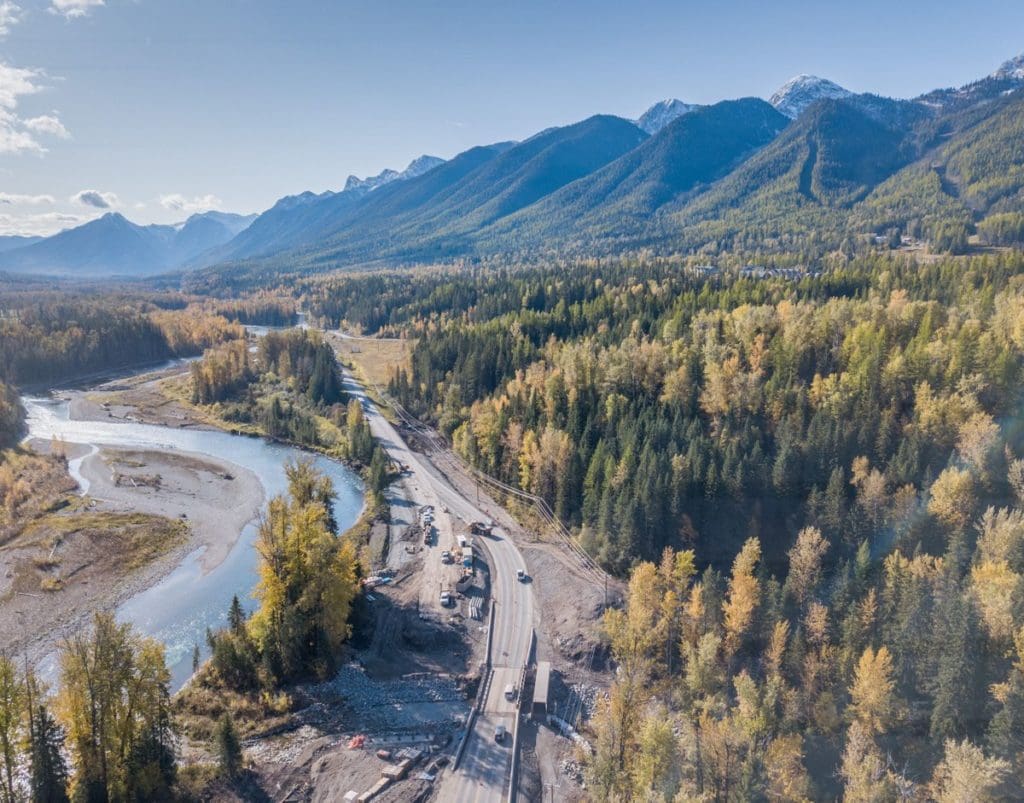
The Elk Valley in southeastern B.C. is a vital corridor for grizzly bears, elk, and many other species. It is key in connecting Banff National Park and Glacier-Waterton International Peace Park.
Winding through the Elk Valley and Crowsnest Pass in Alberta, Highway 3 is a barrier that poses challenges for animals, resulting in deadly collisions. Up to 200 large animals are killed each year, and there are costs to people, too.
To tackle this safety issue, the Reconnecting the Rockies project broke ground in 2020 after more than a decade of research, planning and advocacy.
This innovative partnership includes conservation groups such as Y2Y, Indigenous nations, researchers and government agencies. They share a common goal of reducing wildlife-vehicle collisions and ensuring healthy wildlife populations.
Several wildlife crossings and fencing projects have already been built thanks to this initiative, and there are more to come!
5. World’s longest animal crossing in Hilversum, Netherlands
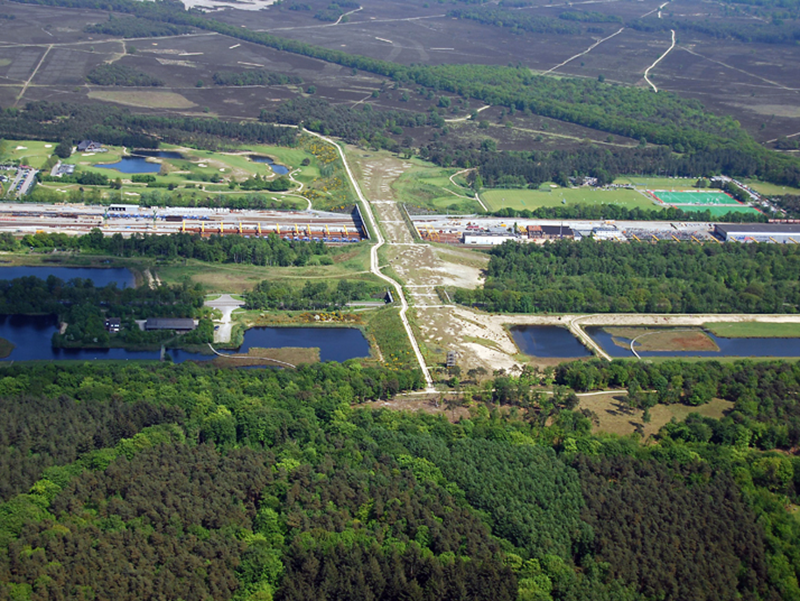
‘Natuurbrug Zanderij Crailoo’ is a wildlife overpass in the Goois Nature Reserve in the Netherlands. Also known as an “ecoduct,” this wildlife overpass is around 50 meters wide and 800 meters in length (164 by 2,625 feet), making it the longest in the world! It even spans a railway line, business park, roadway, and sports complex.
While the concept of wildlife bridges was first developed in France in the 1950s, these crossings took off in the Netherlands. More than 600 underpasses, and bridges like this one, have now been constructed to protect badgers, elk and other mammals.
6. Critical connections for endangered tigers in India
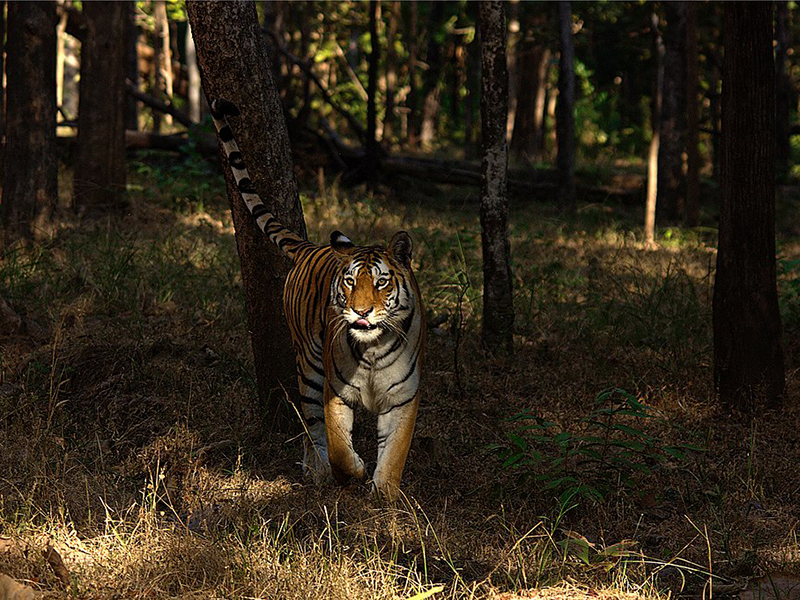
India’s longest road cuts through the Pench tiger reserve. To help address collisions with these large endangered cats, environmentalists advocated for wildlife crossings along this road.
Now, this important tiger habitat is stitched together with the help of more than 25 wildlife overpasses and underpasses, which allow them to cross the highway safely.
Beyond benefitting tigers, a recent study found that at least 21 species use the crossings, including wild dogs, sloth bears, civets and leopards.
7. Rope crossings and underpasses in Queensland, Australia
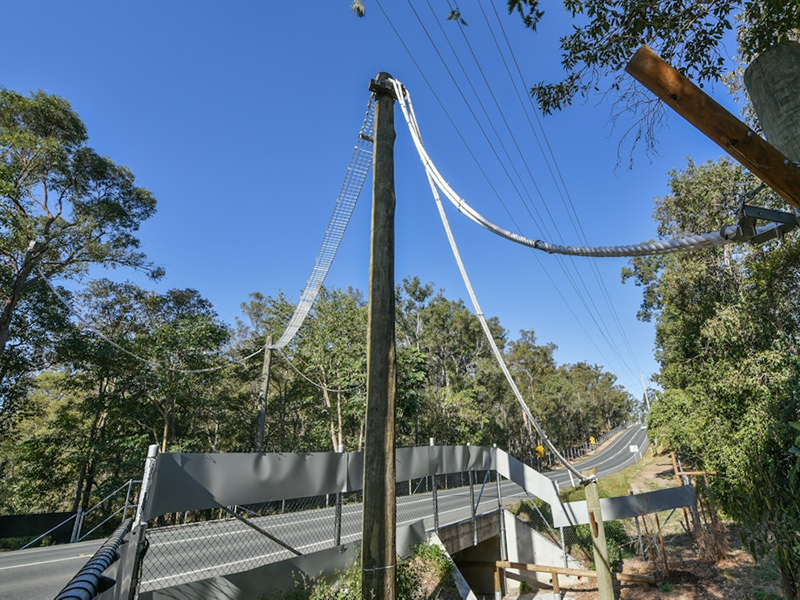
In some parts of Australia, you’ll find systems of wildlife bridges such as rope crossings and culverts with climbing logs and platforms. These help native wildlife including koalas cross busy freeways and other barriers to movement.
In Queensland, Koala populations were decreasing drastically. Collisions with vehicles were found to be the top cause of their death from 1997 to 2011. The state government responded by increasing the number of wildlife crossing structures.
For example, in the City of Moreton Bay alone, there are around 20 rope bridges connecting tree canopy habitat, 10 underpasses, and 10,000 meters of exclusion fencing along roadsides. Since September 2023, numerous koalas have been photographed crossing safely by a wildlife monitoring system at crossings throughout the city.
Header photo: Wildlife overpass crossing structure in Banff National Park, Alberta, Canada (Shutterstock photo)
